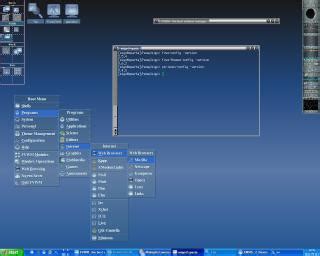FVWM's Hidden Gem: Wallpaper Control in the Config
FVWM, the venerable window manager, is known for its flexibility and power. While many users appreciate its minimalist approach, some might overlook its surprisingly robust capabilities for managing desktop wallpapers. This article delves into FVWM's often-undiscovered gem: controlling your wallpaper directly within your configuration file, unlocking a level of customization often absent in more modern window managers. We'll explore various techniques, address common issues, and reveal the secrets to effortlessly changing your background.
Why Configure Wallpaper in Your FVWM Config?
Manually setting your wallpaper using a separate application every time you want a change is tedious. Integrating wallpaper control into your FVWM configuration offers several advantages:
- Automation: Automate wallpaper changes based on time of day, specific events, or even random selection from a directory.
- Consistency: Ensure your preferred wallpaper is always loaded, regardless of system restarts or accidental changes.
- Simplicity: Consolidate your desktop customization within a single, well-organized configuration file.
- Scripting Power: Leverage FVWM's scripting capabilities to create dynamic and visually engaging wallpaper setups.
Methods for Wallpaper Control in FVWM
FVWM doesn't have a built-in command specifically for setting wallpapers. However, we can achieve this by leveraging external commands and FVWM's AddCmd function. This allows us to execute shell commands within the window manager's environment.
Method 1: Using feh (Recommended)
feh is a lightweight and powerful image viewer commonly used on Linux systems. Its simplicity and robustness make it ideal for FVWM wallpaper control.
AddCmd { "SetWallpaper" "feh --bg-fill /path/to/your/wallpaper.jpg" }
Replace /path/to/your/wallpaper.jpg with the actual path to your image file. The --bg-fill option ensures the image scales to fill the entire screen, preventing stretching or distortion. You can experiment with other feh options for different scaling behaviors.
To set this wallpaper on startup, simply add this line to your .fvwmrc configuration file.
Method 2: Using gsettings (for GNOME-based systems)
If you're using a GNOME-based desktop environment, you can leverage gsettings to control the wallpaper. This method requires knowing the correct schema and key for your desktop environment's wallpaper settings. This can vary between GNOME versions. Generally, it might look like this:
AddCmd { "SetWallpaper" "gsettings set org.gnome.desktop.background picture-uri 'file:///path/to/your/wallpaper.jpg'" }
Remember to replace /path/to/your/wallpaper.jpg with your image path. The file:/// prefix is crucial for gsettings to understand the file path. This method requires gsettings to be installed on your system.
Method 3: Using xsetroot (Less Recommended)
xsetroot is a less versatile option, suitable only for simple bitmap images. It lacks the sophisticated scaling capabilities of feh.
AddCmd { "SetWallpaper" "xsetroot -bitmap /path/to/your/wallpaper.xbm" }
Replace /path/to/your/wallpaper.xbm with the path to your XBM (X Bitmap) file. This method is generally less preferred due to its limitations.
Troubleshooting Common Issues
- Incorrect Path: Double-check that the file path in your
AddCmdis correct. Use absolute paths to avoid ambiguity. - Permissions: Ensure the FVWM user has read permissions for the image file.
- Image Format:
fehsupports a wide range of image formats, butxsetrootis limited to XBM. - Missing Commands: Make sure
fehorgsettings(depending on the method you choose) are installed on your system. Use your distribution's package manager to install them if necessary.
Automating Wallpaper Changes (Advanced)
With FVWM's scripting capabilities, you can create sophisticated wallpaper management. This often involves shell scripting and utilizing the AddCmd function to execute scripts at specific intervals or based on events. A simple example (using feh):
- Create a shell script (e.g.,
change_wallpaper.sh) that randomly selects a wallpaper from a directory:
#!/bin/bash
WALLPAPER_DIR="/path/to/your/wallpapers"
RANDOM_WALLPAPER=$(ls $WALLPAPER_DIR | shuf -n 1)
feh --bg-fill "$WALLPAPER_DIR/$RANDOM_WALLPAPER"
-
Make the script executable:
chmod +x change_wallpaper.sh -
Add this to your
.fvwmrc:
AddCmd { "ChangeWallpaper" "sh /path/to/change_wallpaper.sh" }
Now you can create a timer or use other FVWM features to call the ChangeWallpaper command periodically.
Conclusion
Integrating wallpaper control directly into your FVWM configuration provides a streamlined and efficient approach to managing your desktop background. By leveraging tools like feh and employing FVWM's scripting capabilities, you can unlock a level of customization that enhances your FVWM experience significantly, transforming it from a simple window manager into a truly personalized desktop environment. Remember to always back up your .fvwmrc file before making significant changes.

